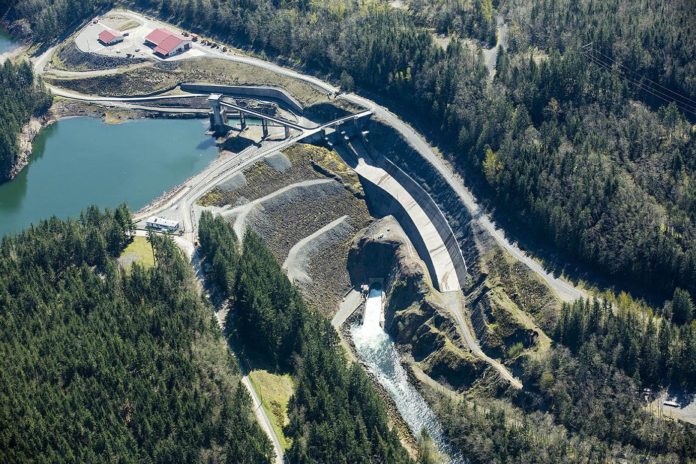Our seven-week series of columns focusing on the old town of Lester fittingly come to a close with this April 2013 photo of the Howard Hanson Dam. Originally known as the Eagle Gorge Dam, this flood control structure was built by the Army Corp of Engineers and completed in 1961. A dedication attended by federal, state, and local dignitaries was held on May 12, 1962. Construction of the dam required the relocation of 13 miles of the Northern Pacific Railway, whose lines have traversed the upper Green River Valley since 1888. Though preventing yearly floods in the Kent valley was its central focus, the dam also stores water from the Green River for diversion to the City of Tacoma’s purification plant three miles downstream. Desires for a clean source of drinking water for municipal purposes resulted in Tacoma’s decisions to limit public access to the watershed. But, 18 river miles upstream from the dam stood the town of Lester, home at its peak to about to about 1,000 people. Lester’s primary purpose was to support the railroad, though in later years it also hosted Scott Paper’s last of the old-fashioned logging camp. The first nail in Lester’s coffin was the conversion of steam locomotives to diesel beginning in 1944, resulting in the need for fewer rail workers. Then in 1964 Tacoma constructed gates to close off access through its watershed. Soon afterwards, the City condemned land eastward from their water intake, purchasing lands on both sides of the river. By 1967, Tacoma’s acquisitions had reached Lester, when the NP Railway agreed to sell the entire townsite of some 80-acres for $35,000. In 1984, legislation sponsored by Art Wang of Tacoma eliminated the Lester School District merging it into Enumclaw’s. One by one residents left until only one remained. Gertrude Murphy stayed until her very end, dying there in 2003 at age 99 and bringing to a close Lester’s 115-year lease on life. This photo comes courtesy of Miles Blohm and KPLU.







